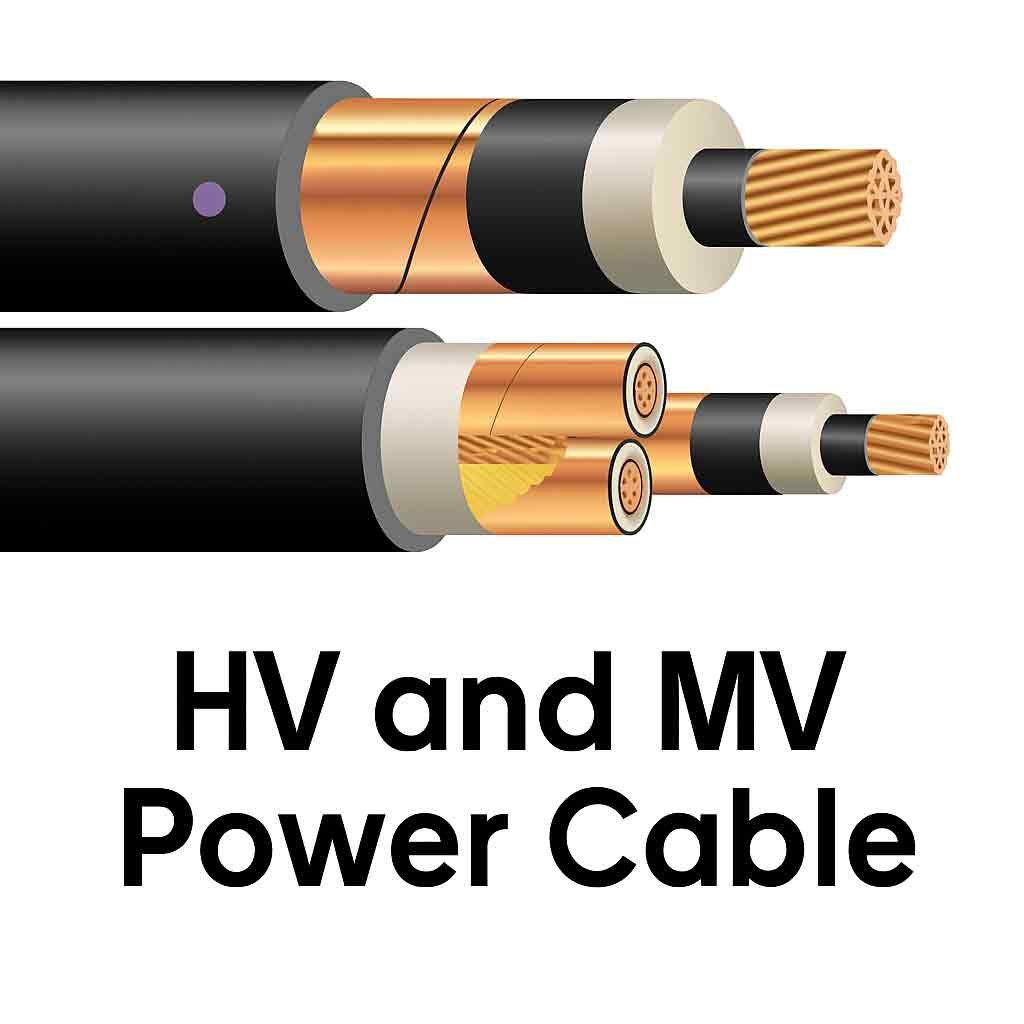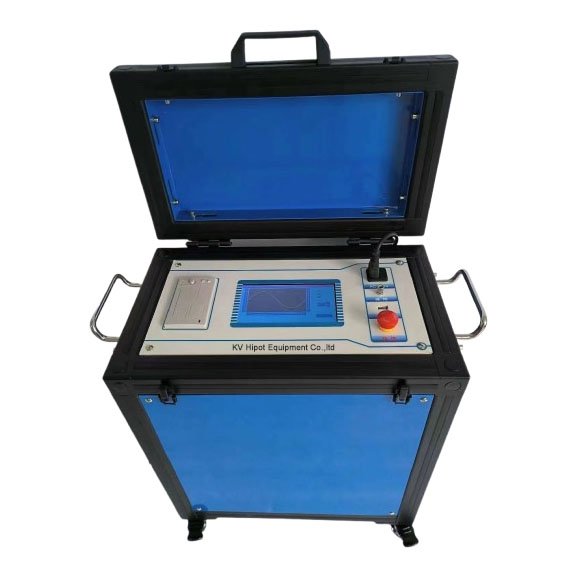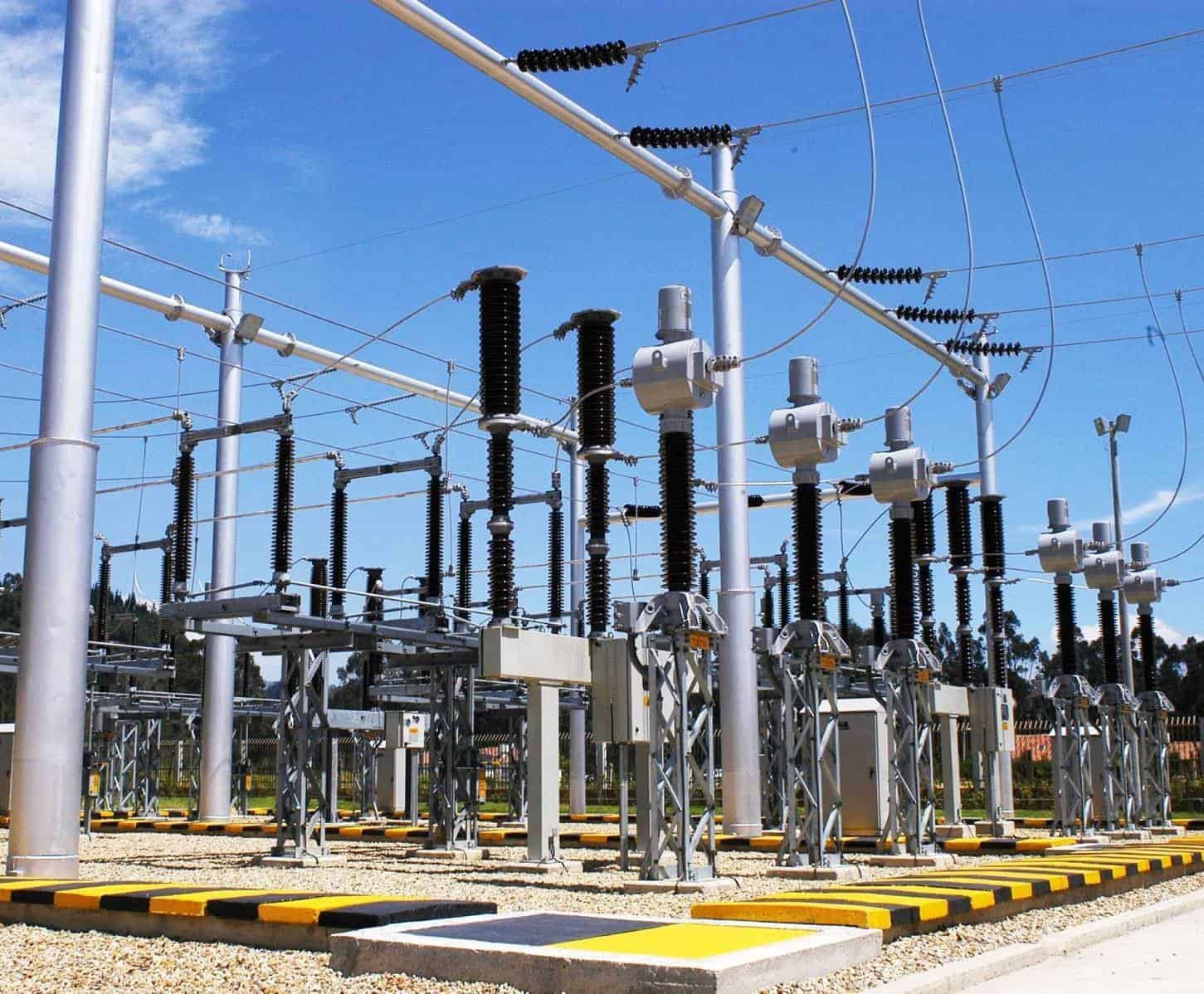Selecting the right high voltage cable testing equipment is crucial. It ensures safety, accuracy, and long-term reliability for your power cables. Making the wrong choice can lead to inaccurate results and potential safety hazards.
The best equipment for high voltage cable testing depends on your specific needs, but Very Low Frequency (VLF) testers are often preferred for modern cables like XLPE. VLF testing effectively identifies insulation defects without the damaging effects associated with DC testing, making it a safer and more reliable option for ensuring the integrity of your cable networks.

Choosing the right high voltage cable testing equipment is a critical decision that impacts the safety and reliability of your electrical systems. This choice is not just about meeting immediate testing needs; it’s about making a long-term investment in the integrity of your power grid.
A thoughtful selection process will ensure you acquire a tool that is not only effective but also provides value for years to come. This guide will walk you through the essential considerations to help you make an informed decision and find the perfect equipment for your requirements.
What is the best equipment for high voltage cable testing?
Struggling to find the right equipment for your high voltage cable testing? You need a method that is both effective and non-destructive. The wrong choice could lead to damaged cables or missed defects, compromising the safety and reliability of your entire system.
The best equipment for most modern high voltage cable testing applications is a Very Low Frequency (VLF) hipot tester. VLF technology is particularly effective for testing cables with solid dielectric insulation, like cross-linked polyethylene (XLPE). It can detect issues such as water trees and other insulation defects that other methods might miss.
VLF testing has become the industry standard for several key reasons. It is a non-destructive method, which means it won’t damage healthy cable insulation during the testing process. This is a significant advantage over DC hipot testing, which has been shown to be potentially harmful to certain types of cables. Furthermore, VLF testers are generally more portable and easier to use in the field compared to traditional power frequency AC test sets.
This makes them a practical choice for on-site testing and maintenance. When combined with diagnostic techniques like Tan Delta and Partial Discharge analysis, VLF testing provides a comprehensive assessment of cable health.
| Feature | VLF Hipot Tester | DC Hipot Tester | Power Frequency AC Tester |
|---|---|---|---|
| Effectiveness on Modern Cables (XLPE) | High | Low (can be damaging) | High (but bulky and expensive) |
| Portability | High | High | Low |
| Non-destructive | Yes | No (for some cable types) | Yes |
| Diagnostic Capabilities | Excellent (with Tan Delta/PD) | Limited | Good (but less practical for field use) |
What factors should I consider when buying a VLF hipot tester?
Choosing a VLF hipot tester can be a complex task. With so many options available, it’s easy to feel overwhelmed. You need a tester that is not only accurate and reliable but also suits your specific application and budget. Making the wrong choice can result in wasted money and inefficient testing.

When buying a VLF hipot tester, key factors to consider include the voltage output, waveform, and design of the unit. The tester’s voltage rating must be higher than that of the cable you are testing. You should also consider the waveform output, with sine wave being the most versatile option. Finally, think about the unit’s portability and durability, especially if you’ll be using it in the field.
Selecting the right VLF hipot tester involves a careful evaluation of your needs. For instance, if you primarily work with medium voltage cables, a tester with a lower voltage rating might be sufficient. However, for high voltage applications, you’ll need a more powerful unit. The waveform is another critical consideration. While a cosine-rectangular wave is suitable for basic hipoting, a sine wave output is necessary for more advanced diagnostics like Tan Delta and partial discharge testing.
Portability is a major factor for field technicians. A lightweight, compact unit will be much easier to transport and set up. Some models even come in two pieces for easier handling. Don’t forget to consider the manufacturer’s reputation and the availability of after-sales support, as these can be crucial for long-term reliability.
| Factor | Key Considerations |
|---|---|
| Voltage Output | Must be higher than the cable’s voltage rating. |
| Waveform | Sine wave is more versatile than cosine-rectangular. |
| Portability | Lighter and more compact models are better for field use. |
| Durability | Important for heavy-duty testing and harsh environments. |
| Manufacturer & Support | Look for a reputable brand with good customer service. |
Very Low Frequency (VLF) Tester with Tan Delta Testing
What Is Tan Delta Testing?
Tan Delta testing, also known as Dissipation Factor Testing, is one of the core methods I use for assessing the insulation condition of high-voltage electrical assets. By measuring the ratio of resistive current to capacitive current in insulation, this diagnostic tool provides valuable insight into the dielectric integrity of cables, transformers, and other equipment. It is especially useful for identifying issues such as insulation aging, moisture ingress, or contamination before they lead to critical failures.
Tan Delta testing in combination with Very Low Frequency (VLF) testing
In practice, I typically perform Tan Delta testing in combination with Very Low Frequency (VLF) testing. The low-stress, low-frequency (typically 0.1 Hz) nature of VLF testing allows for accurate insulation assessment while minimizing the mechanical and electrical stress on the asset. This non-destructive approach enables early detection of insulation problems and supports preventive maintenance decisions with minimal risk to the equipment.
Incorporating Tan Delta testing into routine diagnostics ensures early identification of deterioration, which helps extend equipment life, minimize downtime, and avoid costly repairs—resulting in more efficient and sustainable operations.
Advantages of a VLF Hipot Tester with Integrated Tan Delta Functionality
VLF hipot testers integrated with Tan Delta functionality, offering a compact and highly efficient testing solution. With this all-in-one system, I can complete both high-voltage withstand testing and insulation quality assessment in a single test cycle—saving significant time and reducing the need for multiple setups or devices.
One of the most valuable aspects of this integration is the ability to obtain both pass/fail high-voltage test results and quantitative dielectric loss data. This allows for more accurate identification of insulation degradation, moisture presence, and other aging effects. Based on these results, I can prioritize maintenance or replacement schedules more effectively, which enhances system reliability and extends asset lifespan.
Additionally, using one integrated device ensures higher safety and precision. It reduces operational complexity, eliminates cross-device inconsistencies, and provides consistent, high-quality test results. This greatly improves testing convenience while ensuring professional-grade accuracy and safety.

Best Practices for Tan Delta and VLF Testing
To ensure safe, accurate testing, I always follow a series of best practices:
- Pre-Test Inspection: I begin with a thorough visual check of the equipment and cables to ensure there is no damage or contamination that could affect the test or pose safety hazards.
- Controlled Test Environment: I conduct testing in a clean, dry, and interference-free environment to maintain measurement integrity.
- Monitoring During Testing: During Tan Delta testing, I closely monitor the readings for anomalies such as spikes or sudden changes, which may indicate insulation degradation or defects. For VLF testing, the test voltage is carefully selected based on the rated voltage and insulation type to avoid overstressing the cable.
- Post-Test Review: After testing, I immediately document and compare the results to baseline or historical data to evaluate trends or deviations.
- Equipment Calibration: Periodic calibration of test equipment is essential to maintain measurement accuracy and align with evolving industry standards.
How do I determine the required voltage and power rating for my cable testing equipment?
Figuring out the right voltage and power rating for your cable testing equipment can be a real headache. If you choose a tester with too low a rating, you won’t be able to test your cables effectively. On the other hand, a unit with an unnecessarily high rating can be a waste of money. You need a way to determine the precise requirements for your specific needs.
The key is to match the equipment to the cables you work with and the standards you need to follow, like IEEE 400.2. For voltage, a general rule is to test at 2.5 to 3 times the cable’s normal line-to-ground voltage. The standard output frequency for VLF testing is typically 0.1 Hz, but can range from 0.01 Hz to 0.1 Hz depending on the cable’s length and capacitance.
Choosing the correct voltage and frequency is not just a technical detail—it’s at the heart of effective cable testing. The voltage needs to be high enough to stress the insulation and reveal any hidden weaknesses.
The frequency is also critical. While 0.1 Hz is the most common, a lower frequency allows you to test longer cables with the same equipment. At my company, KVHIPOT, we help our clients understand these factors to select a VLF tester that is both powerful enough for their needs and cost-effective. We want to ensure you can perform accurate tests that keep your electrical systems safe and reliable.
What are the main differences between VLF, DC, and power frequency AC testing?
You’re looking for the best way to test your cables, but the different methods like VLF, DC, and power frequency AC can be confusing. Each one has its own use, and choosing the wrong one can lead to inaccurate results or even damage your cables.
You need a clear understanding to make the right choice.
VLF, DC, and power frequency AC testing are all used to check the health of cable insulation, but they work in very different ways. VLF testing uses a low frequency AC voltage, which is effective for modern XLPE cables without causing damage. DC testing uses a constant voltage and is now known to be potentially harmful to aged polymer-insulated cables. Power frequency AC testing is similar to the voltage the cable sees in service but requires very large and heavy equipment, making it impractical for field use.
In my years of experience, I’ve seen a major shift in the industry away from DC testing for medium and high voltage XLPE cables.
The main reason is that DC testing can create space charges in the insulation, which can lead to failures when the cable is put back into service. Power frequency testing, while technically a good simulation of real-world conditions, is just too bulky and expensive for most of my clients. This is why VLF has become the preferred method.
It offers the best of both worlds: it’s an AC test that can detect important defects, but the low frequency means the equipment can be small, lightweight, and affordable. This makes it perfect for the kind of on-site testing my customers in the power, mining, and transportation industries need to do.
| Test Method | Primary Use | Advantages | Disadvantages |
|---|---|---|---|
| VLF (Very Low Frequency) | Testing modern solid dielectric cables (XLPE, EPR) | Effective at finding defects, non-destructive, portable equipment | Not suitable for all cable types |
| DC (Direct Current) | Older paper-insulated, lead-covered (PILC) cables | Simple, inexpensive equipment | Can damage aged XLPE cables, ineffective for some defects |
| Power Frequency AC | Factory testing, special applications | Simulates in-service stress | Very large, heavy, and expensive equipment; not for field use |
How can I ensure the safety of my team during high voltage cable testing?
High voltage testing is essential, but it’s also dangerous. You’re worried about the safety of your team. Without the right procedures, there’s a serious risk of accidents, which could lead to severe injury or even death. You need to be sure you’re doing everything possible to keep your people safe.
To ensure safety during high voltage testing, you must follow strict safety protocols. This includes de-energizing and isolating the cable, setting up a safe work area with clear boundaries, using proper personal protective equipment (PPE), and ensuring all equipment is properly grounded. It is also critical that the cable is safely discharged after the test.
Safety is the most important part of any high voltage testing job. From my experience working with clients in various industries, I can’t stress this enough. Before any test begins, a thorough risk assessment must be done.
Everyone on the team needs to know their role and the safety procedures. This includes things like the “one-minute rule” for hipot testing, where the test voltage is applied for a specific duration.
At KV HIPOT, we not only provide the equipment but also emphasize the importance of training. We want to make sure that our customers not only have the right tools but also the knowledge to use them safely and effectively. A safe test is a successful test.
| Safety Measure | Description |
|---|---|
| Isolate and De-energize | Ensure the cable is completely disconnected from any power source. |
| Establish a Safe Zone | Use barriers and warning signs to keep unauthorized personnel away. |
| Use Personal Protective Equipment (PPE) | This includes high-voltage gloves, safety glasses, and arc flash clothing where necessary. |
| Proper Grounding | The test set and the cable must be properly grounded to prevent static buildup and ensure a safe path for fault currents. |
| Cable Discharge | After the test, the cable must be safely discharged to remove any stored electrical charge. |
| Team Briefing | Everyone involved should understand the test procedure and their responsibilities. |
Frequently Asked Questions (FAQs)
1. What Is a VLF Hipot Tester and Its Role in Cable Testing?
A VLF (Very Low Frequency) hipot tester is a device used to perform high-voltage insulation testing, especially for medium- and high-voltage cables. It operates at around 0.1 Hz, which reduces capacitive charging current and makes it suitable for long cables or cables with high capacitance. It can detect insulation weaknesses and is widely used for acceptance and maintenance testing in line with standards such as IEEE 400.2.
2. Cable withstand voltage test choose VLF Tester or DC Hipot Tester?
VLF testing uses very low frequency AC voltage and is the preferred, safer method for testing modern cables like XLPE. DC Hipot testing uses direct current and can damage these cables.
2. How Does a VLF Hipot Tester Differ from a Traditional AC Hipot Tester?
Traditional AC hipot testing uses 50 or 60 Hz frequency, which can lead to high charging currents in long cables, making results less stable. A VLF hipot tester, operating at 0.1 Hz, minimizes these effects, ensuring better accuracy and less stress on the insulation. This makes it ideal for field testing and diagnosing aging insulation in real-world conditions.
3. What Are the Benefits of a VLF Tester with Integrated Tan Delta Measurement?
An integrated VLF-Tan Delta tester combines insulation withstand testing with real-time insulation quality analysis. Tan Delta measurement reveals dielectric losses and detects early signs of insulation aging or moisture ingress. This integration enables complete diagnostics in one step, reducing testing time, improving data quality, and lowering operational costs.
4. What Is Partial Discharge Testing Used For in High-Voltage Cables?
Partial discharge (PD) testing detects minor electrical discharges within the insulation that indicate defects or deterioration. Early detection helps prevent insulation breakdowns. VLF testers can be used to apply test voltage for PD detection with minimal stress. Regular PD monitoring improves cable reliability and extends service life.
5. How Does a Cable Tester Support Maintenance Strategies?
A cable tester helps monitor insulation resistance and identify moisture, degradation, or other issues before they lead to faults. By incorporating features such as Tan Delta and PD measurement, it provides a more comprehensive understanding of cable health. Regular testing supports proactive maintenance, reduces downtime, and enhances system safety.
6. What Should Be Considered When Renting VLF Hipot Test Equipment?
When renting VLF test equipment, I always consider the following:
- Specifications: Ensure the tester meets voltage and functionality needs (e.g., PD or Tan Delta).
- Calibration: Confirm the equipment is recently calibrated for accurate results.
- Support: Choose a provider that offers reliable technical support and clear operation manuals.
- Terms & Conditions: Review rental terms, including responsibilities for maintenance or damage.






